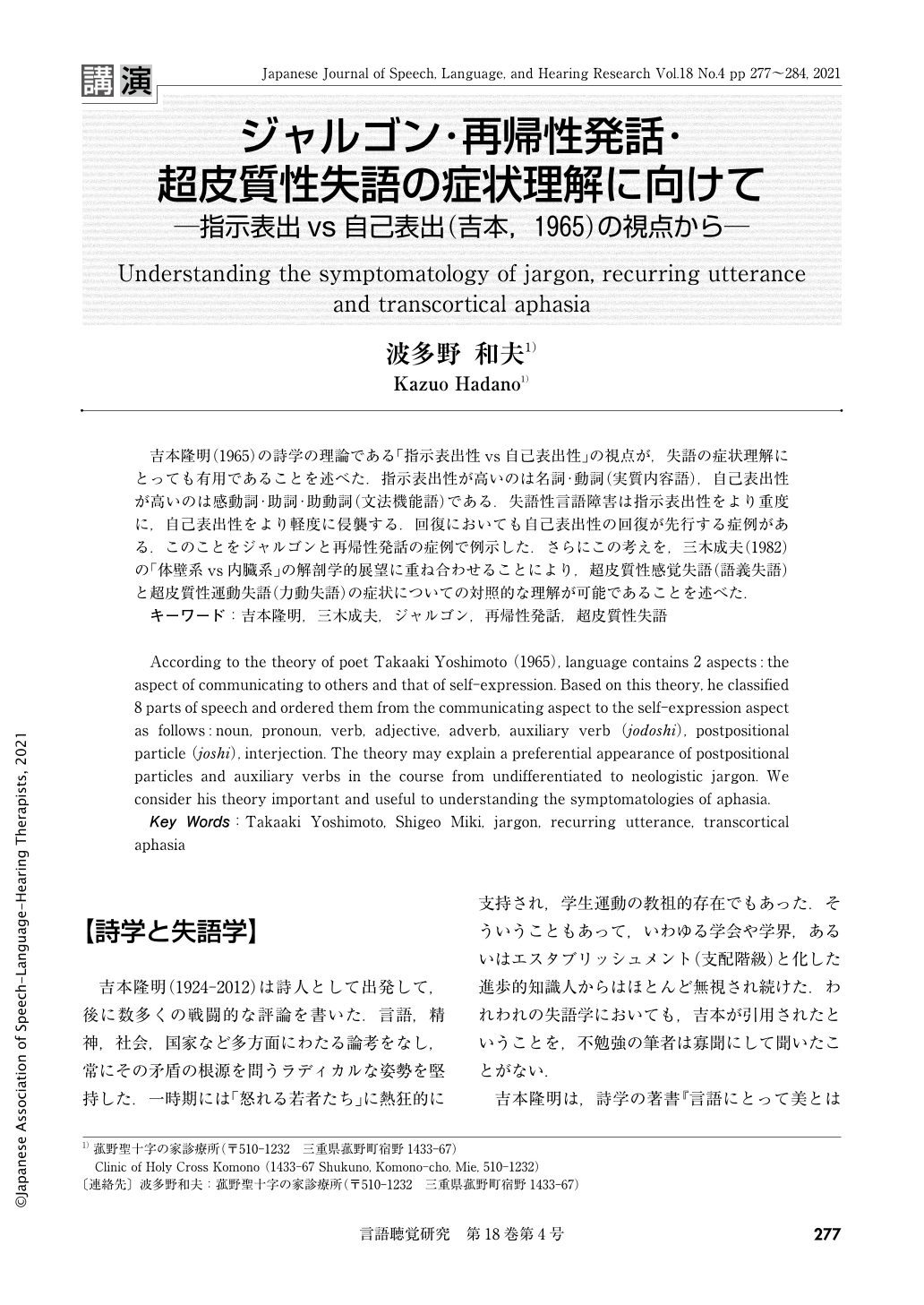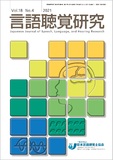Japanese
English
- 有料閲覧
- Abstract 文献概要
- 1ページ目 Look Inside
- 参考文献 Reference
吉本隆明(1965)の詩学の理論である「指示表出性vs自己表出性」の視点が,失語の症状理解にとっても有用であることを述べた.指示表出性が高いのは名詞・動詞(実質内容語),自己表出性が高いのは感動詞・助詞・助動詞(文法機能語)である.失語性言語障害は指示表出性をより重度に,自己表出性をより軽度に侵襲する.回復においても自己表出性の回復が先行する症例がある.このことをジャルゴンと再帰性発話の症例で例示した.さらにこの考えを,三木成夫(1982)の「体壁系vs内臓系」の解剖学的展望に重ね合わせることにより,超皮質性感覚失語(語義失語)と超皮質性運動失語(力動失語)の症状についての対照的な理解が可能であることを述べた.
According to the theory of poet Takaaki Yoshimoto (1965), language contains 2 aspects:the aspect of communicating to others and that of self-expression. Based on this theory, he classified 8 parts of speech and ordered them from the communicating aspect to the self-expression aspect as follows:noun, pronoun, verb, adjective, adverb, auxiliary verb (jodoshi), postpositional particle (joshi), interjection. The theory may explain a preferential appearance of postpositional particles and auxiliary verbs in the course from undifferentiated to neologistic jargon. We consider his theory important and useful to understanding the symptomatologies of aphasia.

Copyright © 2021, Japanese Association of Speech-Language-Hearing Therapists. All rights reserved.


